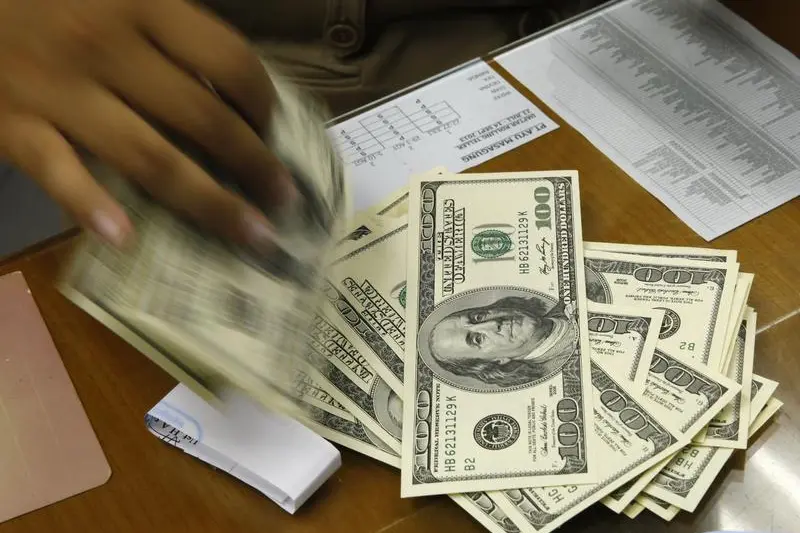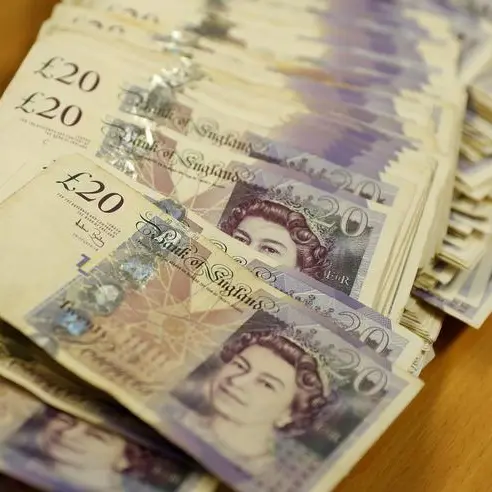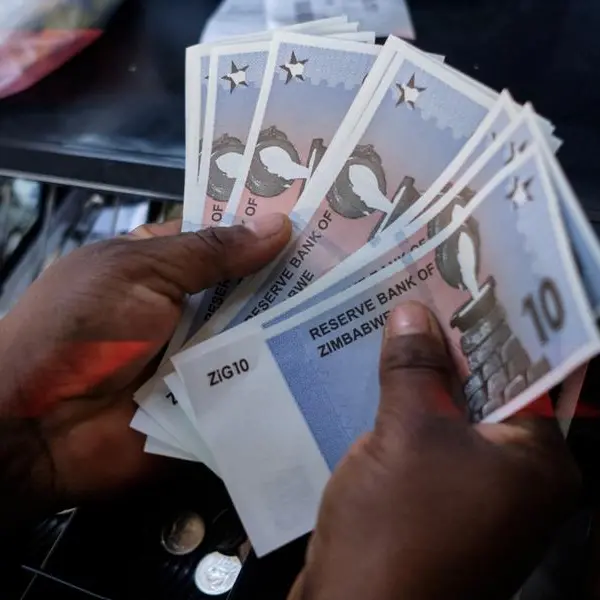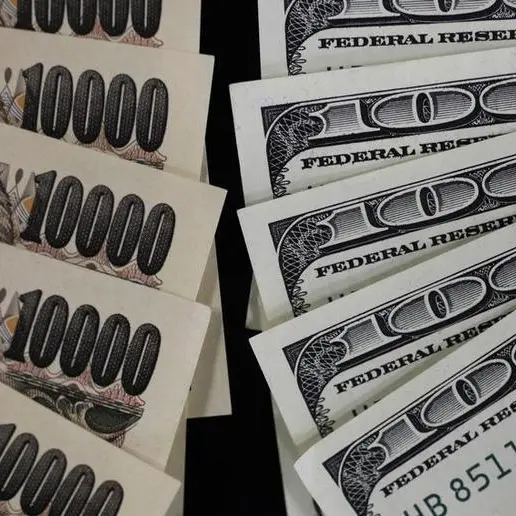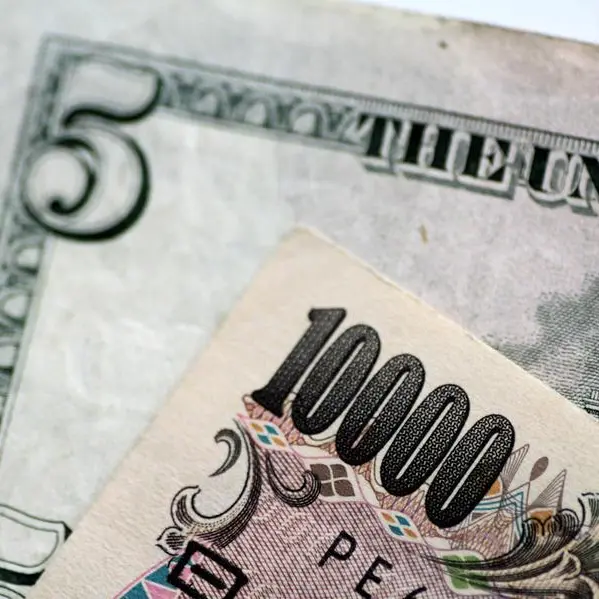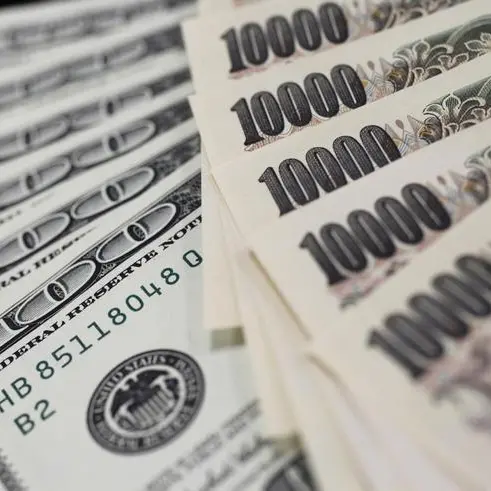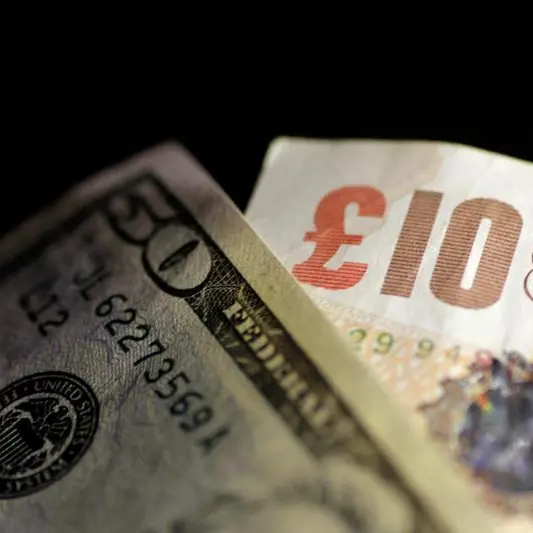PHOTO
SINGAPORE - The dollar fell broadly on Wednesday as it tracked a global decline in bond yields, while sterling struggled to retain gains following dovish comments from Bank of England (BoE) Governor Andrew Bailey on the central bank's rate outlook.
The greenback slipped below 150 yen in early Asia trade and last bought 149.93 yen, giving the Japanese currency some breathing space having been pinned near a three-month low in previous sessions.
In the past, traders have viewed 150 as a line in the sand that could trigger currency intervention from Japanese authorities, such as was the case in late 2022.
The move lower in the dollar has come on the back of a dip in U.S. Treasury yields in line with its global peers.
That followed lower-than-expected Canadian inflation data and euro zone wage growth - all of which sent domestic yields falling as it ramped up expectations for rate cuts by global central banks this year.
The Canadian dollar was last little changed at 1.3525 per U.S. dollar, while the euro rose 0.03% to $1.0809.
The U.S. dollar index steadied at 104.05.
"Interestingly, the order and extent of policy moves that are implied by market rates seem to have only the vaguest of correlations with the levels of economic activity in each of the G10 economies," said Jane Foley, senior FX strategist at Rabobank.
"It is clear that the process of calibrating the timing and pace of central bank policy moves this year still has some way to go."
Still, the Federal Reserve remains the king of central banks, and minutes of its latest policy meeting due later on Wednesday will provide further clarity on the outlook for U.S. rates.
"The overarching FOMC minutes takeaway must be that it is not (yet) time to initiate rate cut," said Vishnu Varathan, chief economist for Asia ex-Japan at Mizuho Bank.
"At best, it will be inconclusive with data dependence caveats gaining prominence. At worst, irrelevant, given ex-post hot inflation and strong jobs data.
"Either way, it will limit how far pivot bets can run."
Traders are currently pricing in about 90 basis points worth of easing by the Fed this year.
Elsewhere, sterling gained 0.02% to $1.2622, having touched a one-week high of $1.2668 in the previous session, due mostly due to broad dollar weakness.
BoE's Bailey said on Tuesday he was comfortable with investors betting on interest rate cuts this year, but pointed to signs that Britain's economy was picking up after falling into recession in late 2023.
That sent sterling to its lowest level against the euro in around a month and UK gilt yields falling.
"Bailey sounded more dovish than he had been previously and that weighed on sterling a little. We're still comfortable with our forecast for an August start to the Bank of England's easing cycle," said Carol Kong, a currency strategist at Commonwealth Bank of Australia.
Down Under, the Australian dollar was last 0.06% higher at $0.6553, little changed after domestic data on Wednesday showed the country's wage price index rose 0.9% in the December quarter, matching market forecasts.
The New Zealand dollar edged 0.02% higher to $0.6167.
Both currencies, often used as liquid proxies for the Chinese yuan, failed to get a meaningful boost in the previous session following China's biggest ever reduction in its benchmark mortgage rate in an attempt to prop up the country's struggling property market and broader economy.
The move failed to draw much excitement from investors, as experts said more needs to be done.
The offshore yuan was last marginally lower at 7.2033 per dollar.
(Reporting by Rae Wee. Editing by Sam Holmes)
